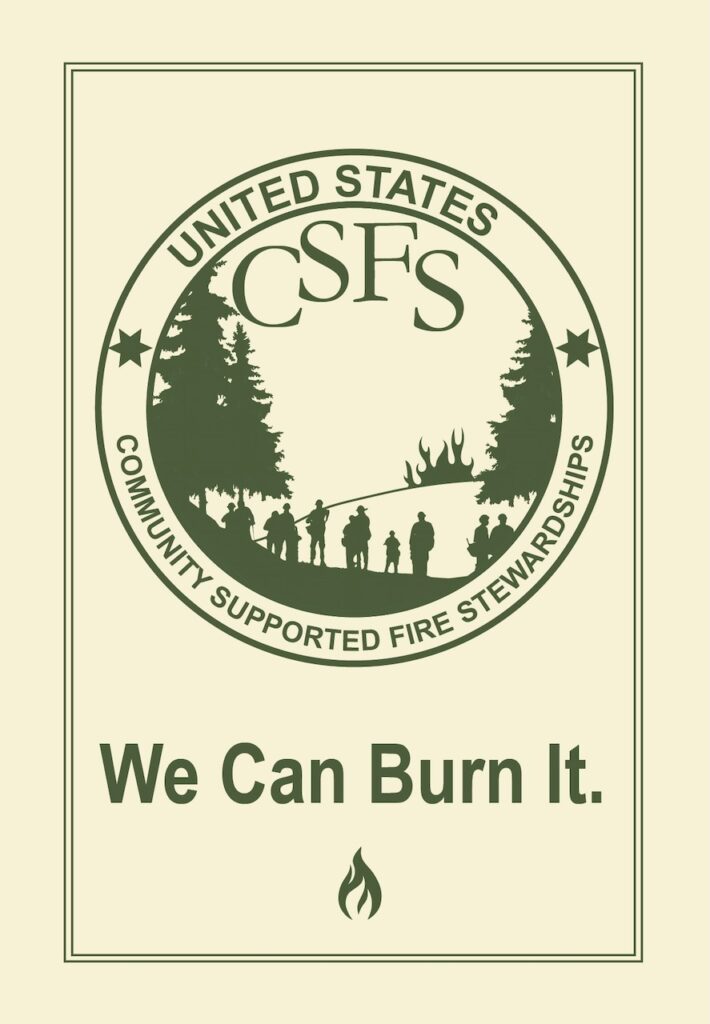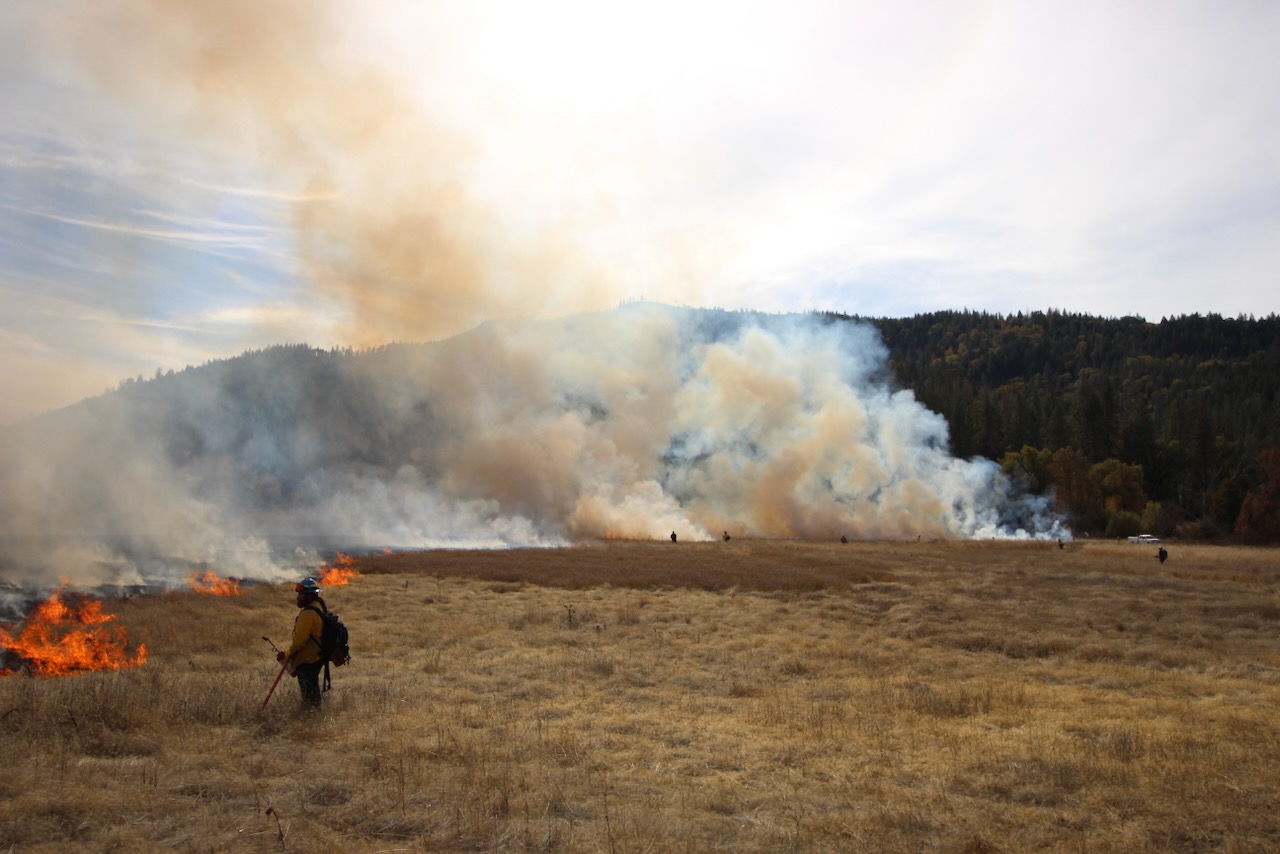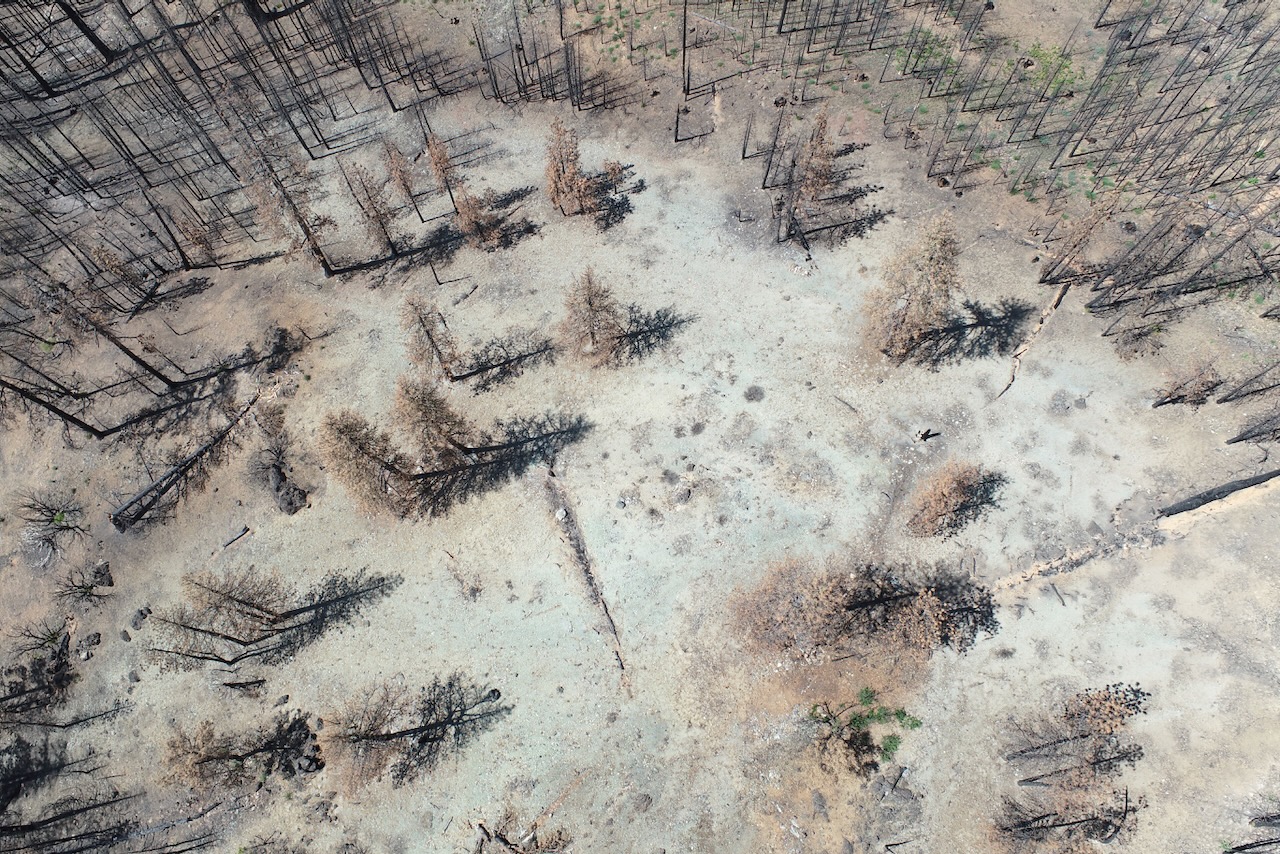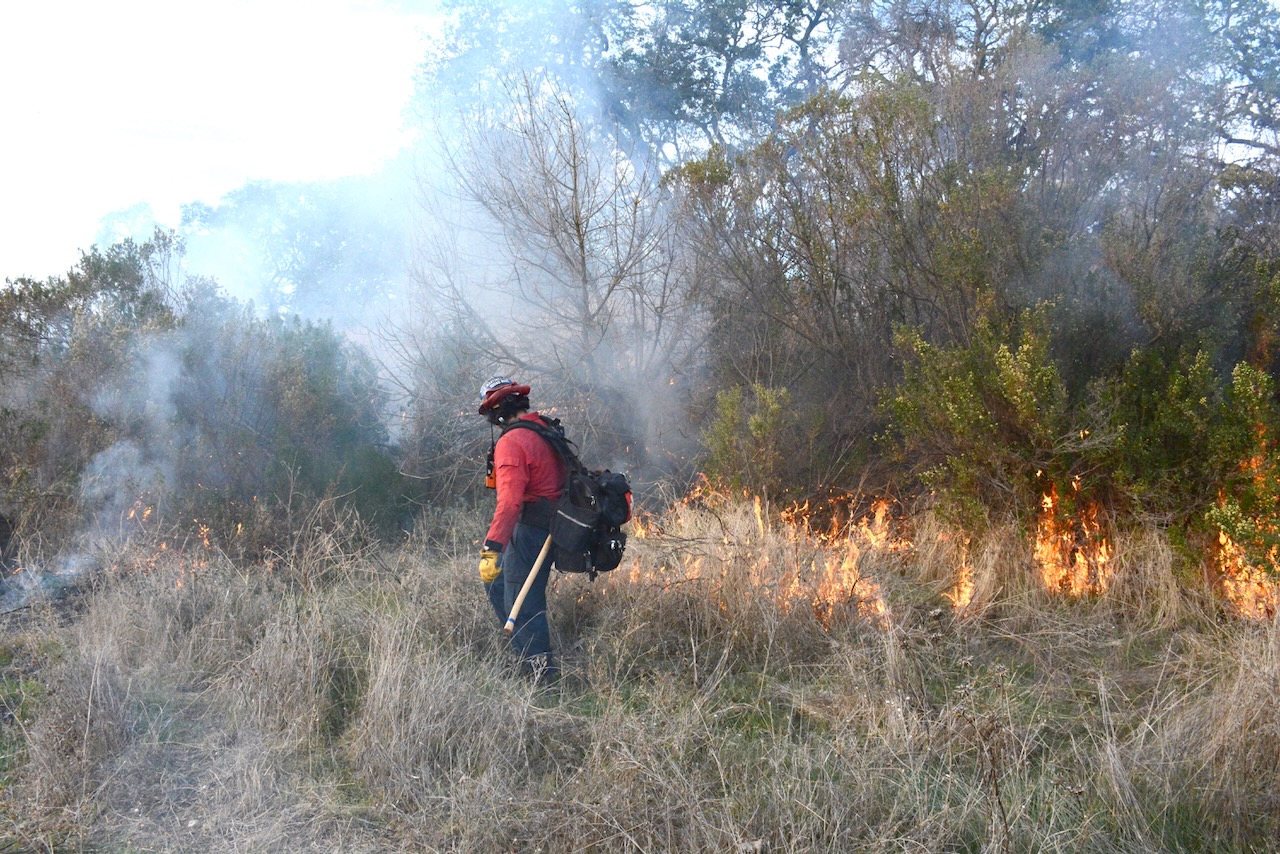
Pyro Futures: Imagining Our Evolving Relationship with Fire
Editor’s note: Emily Schlickman and Brett Milligan are professors of landscape architecture and environmental design at the University of California, Davis (UC Davis). In this blog, they introduce the Pyro Futures exhibition and Design by Fire book, both projects that imagine what our future relationships with fire could look like. All text and images can be credited to the authors unless otherwise indicated.
Pyro Futures is a physical and online exhibition that invites collective speculation on the transformative nature of fire. It explores the ways fire and fire stewardship can change California’s landscapes, with the hope of enabling participants to perceive and imagine what our shared future might be, and our potential roles in making that future.The exhibition includes three potential future scenarios from our book, Design by Fire. Each scenario explores a different possible future, based on different sets of decisions, actions, trends and chance happenings. In the book we identify seven key factors impacting what future fire conditions might be like. These include: global warming and accelerated landscape change; property and land use; management and stewardship; ecocultural restoration and Indigenous sovereignty; insurance and liability; investments, policy, and governance; and sensing, access, and education. Shortened versions of our book’s three scenarios are provided below.
Scenario One: Pyric Commons
Over the next decade, floods, droughts, fires, and deadly heat waves are felt with increasing intensity around the world, leading to a proactive surge in climate mitigation and adaptation efforts. In California, this results in sweeping policy changes related to land use and management in both rural and wild lands. The Green New Deal becomes real.
For communities living in very high- and high-risk fire zones, such as the wildland urban interface (WUI), the state begins offering collective buyouts, providing opportunities to move to safer locales together, rather than on their own. Alternatively, for communities with lower risks that wish to stay, new regulations mandate that they create their own Community Fire and Landscape Stewardship Plan wherein they must actively manage and burn their lands and surrounding lands at agreed upon time intervals to foster safer and healthier fires.
These efforts are combined with fire surrogate strategies, such as mechanical thinning and productive land cover conversion in landscapes adjacent to development. Over time, these Community-Supported Fire Stewardships (CSFS) create a new, diversified workforce within an expanding green economy, that restores ecological health and function to rural lands, and fosters greater autonomy and self-determination for these communities.
State investments similarly lead to more proactive fire stewardship in its wild and undeveloped lands, vastly increasing the acreage that is beneficially burned.


Scenario Two: Wrath of Fire
In coming decades, little is done to curb carbon emissions at the global level. Around 2030, climate change effects begin to hit hard, exceeding scientific projections. In California, elevated temperatures and longer summer droughts place many ecosystems on the brink, with alpine forests taking the worst hit. Further expansion and development of the WUI continues mostly unchecked by pro-development land use policies.
In the summer of 2040, intense thunderstorms set wildfires burning across huge swaths of the state. The scale is far beyond what public agencies can imagine controlling and many rural communities are destroyed. The intensity of the fires kills nearly everything they burn through. Toxic smoke blankets the state’s skies for months, and without rain, the fires continue through December.
Such a vast extent of the state’s communities are burned in the fires – including thousands of structures – that rebuilding is impossible. Insurance companies fold under the weight of the claims and the state discontinues its insurance stopgaps by necessity. Given the trauma that so many residents have experienced, most don’t want to rebuild or return anyway.
People come to speak mythically about the summer of 2040, when the state radically changed course, went bankrupt and its population plummeted and went elsewhere. Huge expanses of deeply burned land are left to develop in novel ways.


Scenario Three: Right to Burn
At 756,000 acres, the University of California’s 41 natural reserves encompass all major ecosystems in the state. Right to Burn (RTB) is the initiative started in the mid-2020s that re-envisions the reserves as a network of experimental and educational public landscapes for the reintroduction of fire and of Indigenous land stewardship. The program invites native tribes of UC reserve lands to re-assert their rights to cultural burns and other traditional ecological practices within them.
Through the RTB initiative, the reserves become state-of-the-art labs for land-fire stewardship and eco-cultural restoration. People come from around the world to learn from this initiative, be it chancellors or community activists. By 2047, the Right to Burn initiative employs over 60 Indigenous Americans (through job descriptions they co-wrote), fosters the establishment of entirely new majors and academic programs, and creates a range of national and international research collaborations with other universities, public agencies, and other institutions.
Based on its success, RTB’s practices gain popularity and make their way into the U.S. Forest Service and into other public institutions. For the first time in decades, the Forest Service becomes successful at sustainably managing the lands charged to them, with a wider range of benefits to people and other organisms. In turn, shared land right agreements are made, and agencies like the forest service evolve into radically different institutions.


Stewarding Change
We don’t know what future scenarios will be the ones we will actually come to experience and embody, and almost certainly, none of them will be exactly like the ones above. We can’t know the degree to which Indigenous sovereignty and cultural burning will grow. We don’t know how land-fire stewardship will be fostered through funding, policies, and education. We don’t know how much and how quickly our climate and ecosystems are going to change, nor what the nature of fire will be because of those changes. But envisioning exploratory scenarios of what could possibly happen (like Wrath of Fire), combined with more normative scenarios of what we might want to make happen, may provide us with broader and intentional options to consider.
Whatever pyro futures come to be, they will likely consist of blends of resistance, co-creation, and retreat approaches (three broad approaches to fire stewardship we examine across 27 case studies in our book). Given thousands of years of collective human experience with fire, we know we are not separable from it. It has remade us and we have remade it, based on how we act. Any relationships we now make with fire – even if it attempts to be completely hands off – will still bear a heavy imprint of our agency, which is why design by, and with fire is so important. We have, and always have had, so much choice in what nascent, fiery landscapes can be.
Contribute to the Pyro Journal
If you’re interested in helping shape the future of fire in California, we invite you to visit the exhibition in person or online. The show includes a set of journals being collectively written by those who visit and participate in the co-creation of this work. These journals ask questions about how you feel about fire, what most concerns you, and what we can or should do to sculpt the pyro futures we might inhabit. To contribute to this work, click here. At the website you can also vote for your favorite fire mascot to represent a different and more nuanced message about fire.
****
EIN Presswire does not exercise editorial control over third-party content provided, uploaded, published, or distributed by users of EIN Presswire. We are a distributor, not a publisher, of 3rd party content. Such content may contain the views, opinions, statements, offers, and other material of the respective users, suppliers, participants, or authors.

